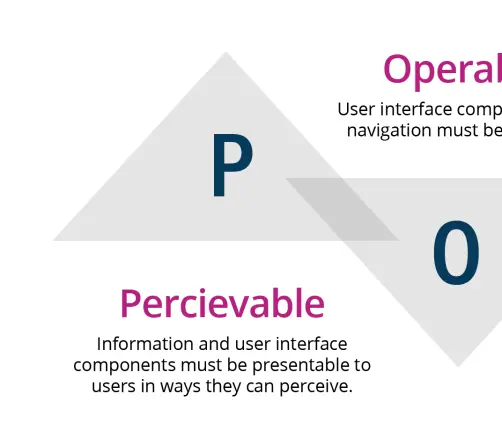The European Accessibility Act: What it Means for Your Business

The pandemic dramatically accelerated digital transformation for companies and consumers, bringing many of the most basic elements of modern life – working, learning and shopping for goods and services – into the digital realm more than ever before.
While DEI initiatives have raised the profile of digital accessibility, for the estimated 135 million people in Europe who are living with one or more disabilities , the shift to digital underscored what they’ve known for years: there are still widespread barriers to access in the online world. Despite rising awareness, private sector companies have been making slow progress on accessibility. According to WebAIM , which surveyed the home pages for the top one million websites, “…significant work remains to be done to make the web accessible to everyone.”
The EU private sector has been largely unregulated when it comes to accessibility. This is about to change with the European Accessibility Act (EAA), and companies in EU, as well as those in the UK and other regions that serve and sell to citizens in the EU, should take note.
Why the EAA marks a turning point for EU private sector accessibility
While the EU Web Accessibility Directive, Directive (EU) 2016/2102, required all public sector websites and mobile apps to adhere to accessibility requirements by 2020 and 2021 respectively, it’s now the turn of private sector companies to sit up and take notice. We are fast approaching the June 28, 2022 deadline for EU member states to adopt the European Accessibility Act 2019 requirements into law. Because the EAA applies to the private sector, it makes accessibility a direct and urgent issue for commercial enterprises.
For years, the Web Content Accessibility Guidelines 2.1 (WCAG 2.1), developed by the World Wide Web Consortium, have been the north star for all enterprises seeking to make their digital entities, websites, apps and services more accessible, but the WCAG has no legal standing and no enforcement, meaning companies have been slow to comply.
By contrast, the EAA legally requires EU member states to enact accessibility requirements. And much like the General Data Protection Regulation (GDPR) - which had a significant ripple effect around the globe - it is envisaged that the EAA will have a global impact by requiring many private companies that do business in the EU to adhere to the EAA or face potential legal consequences.
While there is some lead time before the act fully comes into effect (enforcement won’t begin in earnest until 2025), companies would be wise to start acting now. The lead time for EAA accessibility allows for the expected challenge and complexity involved in achieving compliance. Companies – and/or their digital agencies – need to take action immediately to ensure they clearly understand the implications of the EAA requirements, build in time to train staff, and get the tools and procedures in place for implementation of these important accessibility standards.
In this post, we’ll answer key questions about the applicability of the European Accessibility Act, what businesses need to be aware of, and the benefits that will make this legislation a boon not only for people with disabilities, but for the businesses who serve them.
What is the European Accessibility Act and why does it matter for my business?
For companies operating in and with the EU, the EAA, also known as Directive (EU) 2019/882, is a forcing function. According to the European Commission , the EAA “aims to improve the functioning of the internal market for accessible products and services, by removing barriers created by divergent rules in Member States.”
Functionally, what this promises to do is transform everything digital – websites, e-commerce apps, e-books, even cash machines – to make them universally more accessible to people with disabilities. This benefits a large number of people, including seniors and people with temporary and situational disabilities as well.
Prior to the EAA, member states throughout the EU each had their own accessibility standards for products and services. Because these standards varied from country to country, consumers with disabilities experienced a wide variation in accessibility, a poor selection of products and services available to them, and higher prices overall.
The EAA establishes a set of common accessibility rules for private sector companies to follow, making it easier to sell compliant services and products in all parts of the EU. According to the European Commission , businesses will benefit from these common rules on accessibility, leading to:
- “Costs reduction
- Easier cross-border trading
- More market opportunities for their accessible products and services”
And “persons with disabilities and elderly people will benefit from:
- More accessible products and services in the market
- Accessible products and services at more competitive prices
- Fewer barriers when accessing transport, education and the open labour market
- More jobs available where accessibility expertise is needed”
Ultimately, the underlying principle behind the EAA is to establish “universal design,” which the
UN Convention on the Rights of Persons with Disabilities
(CRPD) defines as “the design of products, environments, programmes and services to be usable by all people, to the greatest extent possible, without the need for adaptation or specialized design.” In alignment with WCAG, the act builds on four key accessibility principles known by the acronym POUR. POUR mandates that for content to be accessible it must be: Perceivable, Operable, Understandable, and Robust.
[Source: https://www.w3.org/TR/UNDERSTANDING-WCAG20/intro.html ]
Who and what does the EAA apply to?
The EAA applies to private companies that provide products or services that are sold or used within the EU regardless of where the companies are based.
Its intent is to standardize products and services that 1) are used by disabled people and 2) which have widely varying accessibility requirements across EU member states. It covers computer software, websites, apps and services, and hardware including:
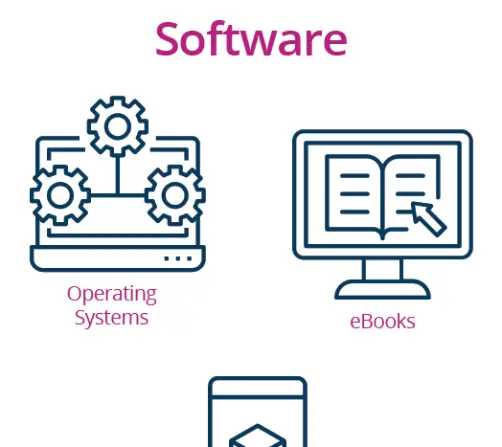
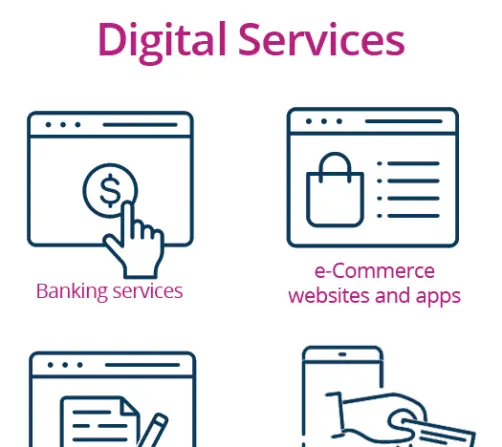
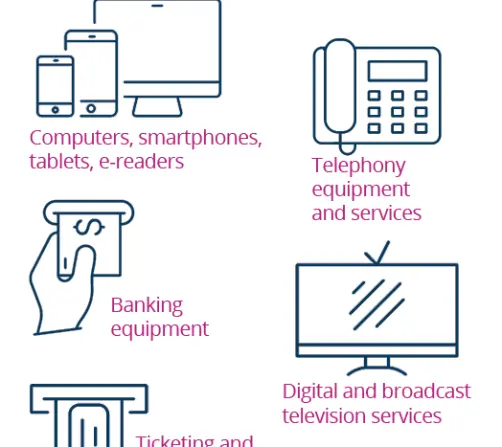
Our company is based in the UK, does the EAA apply to us?
If you sell any products or services within the EU, the answer is YES, no matter where your company is based (unless you meet some very specific exemption criteria, which we’ll cover below).
For companies based in the UK, there has been considerable confusion around the application of the EAA. For public sector entities, the EU Directive on Web Accessibility was implemented in the UK as the Public Sector Bodies (Websites and Mobile Applications) (No. 2) Accessibility Regulations 2018. Even though the UK is no longer a member of the EU, this law remains in place, requiring all public sector bodies to ensure their websites and mobile apps align with WCAG 2.1 Level AA standards, and publish an accessibility statement listing any areas of their site that do not meet those standards, as of June 2021 or be subject to legal action.
For private sector companies, the European Accessibility Act UK answer is a bit murkier. Negotiations about the EAA began while the UK was still a member state of the EU. However the UK left the EU before the EAA could be written into law, and non-EU states are not required to bring the EAA into law. To date, the UK government has not confirmed if it will confirm the EAA into local law, but it’s still important for companies in the UK, and elsewhere outside the EU, to comply with the EAA if they are selling products or services in any EU member state.
This has global ramifications. Companies doing business with the EU must decide if they want to create a dual accessibility system – one that adheres to their local country’s standards AND another for their digital presence in the EU market. Like the experiences of most international companies when the GDPR came into effect, it is often much easier to deploy a single set of technical standards universally than to create separate systems for different geographies.
How does the EAA compare to WCAG?
The main difference between the European Accessibility Act and the Web Content Accessibility Guidelines (WCAG) is that the EAA is legally binding. While the EAA itself does not provide any technical accessibility standards businesses must comply with (it is up to individual member states to decide how they will achieve the aims of any EU directive), it is assumed most will choose to adhere to WCAG 2.1 Level AA requirements, which are already the basis for legal standards like the Americans with Disabilities Act (ADA) and Section 508 compliance in the United States.
While WCAG is highly influential globally, it has no legal standing and no enforcement. The EAA, however, has both. The EAA will require many private companies that do business in the EU to adhere to the EAA. If they don’t, they may be subject to fines or other legal action.
How will the EAA be enforced?
Each EU member state is responsible for enforcing the act, meaning they can decide the penalties and appoint the body in charge of enforcement. The act calls for member states to enforce penalties for noncompliance in a way that is “effective, proportionate, and dissuasive.”
Member states must also make it possible for consumers to report noncompliance – either to the courts or to the body in charge of EAA enforcement in that country. Public and private organizations also must have the option to go to court or file complaints with the body in charge of enforcement in each member state.
What is the European Accessibility Act timeline for enforcement?
For companies affected by the European Accessibility Act, 2025 is the ultimate deadline.
By June 2022, all EU member states will need to translate and adopt the directive into their national laws, and by July 2025 the law must be enforced.
The act was adopted by the EU in 2019, and due to the complexities involved in complying with the EAA, forward-looking companies have already begun making their digital assets more accessible with an eye toward future compliance. If you haven’t yet started making the necessary changes, now is the time to start in order to ensure a smooth transition.
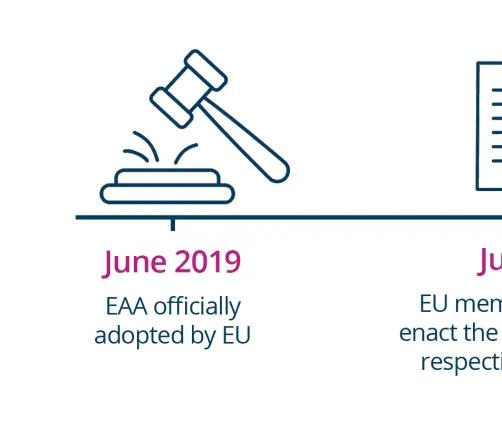
Are any companies exempt from the European Accessibility Act?
The act includes exceptions for “micro-enterprises” and companies for which the EAA would cause “undue burden.”
Micro-enterprises are defined as companies with fewer than 10 employees and an annual turnover of less than two million Euros. Undue burden means a company would not have to comply if doing so would either change the nature of the product or service they offer or if it would financially overburden the company.
There are also some specific exemptions from EAA compliance, including:
- Online maps, provided that essential information is otherwise provided in an accessible way
- Pre-recorded, time-based media that is published before June 2025
- Office file formats published before June 2025
- Archived content that will not be updated after June 2025
- Third-party content that is not funded, developed, or under the control of the organization that is required to be compliant
What are the benefits of the EAA?
Ultimately, we all benefit from more accessible services and devices.
Businesses and governments will benefit from having accessibility requirements that are consistent across all EU member states, including:
- Greater cost savings. According to the EU Commission, differing accessibility requirements cost companies and member states an estimated €20 billion in 2020. The EAA is estimated to reduce that by 45% to 50%.
- Broader market reach. The EAA will increase the market reach of companies serving the EU by enabling them to create a single set of accessibility requirements that apply universally across all member states.
- Research and innovation. The EAA will raise the incentive for companies to make their products and services more accessible. Harmonizing accessibility requirements will also enable companies to better share technology, research and innovations that benefit everyone.
People with disabilities have nearly half a trillion dollars in spending power , and they are engaging with services, e-commerce, apps and other digital resources more than ever before. That alone is a great business case for the ROI of investing in digital accessibility.
Consumers of all abilities, all across the EU, will benefit from the EAA. By creating a more robust and competitive environment, consumers will experience greater innovation and more choices of products and services at more competitive prices.
For people with disabilities, the EAA will provide:
- Greater independence. From banking to travel to e-commerce, people with disabilities will gain more and better access to products and services with the same level of accessibility no matter where they are in the EU.
- More freedom of movement. Because the EAA creates similar accessibility across the EU, people with disabilities will be able to travel and work in different member states, counting on standardized accessibility.
- Additional employment opportunities. The EAA creates opportunities for disabled people to work in businesses that create accessible products and services.
And this beneficial effect carries on more broadly as well, as countries desiring to do business in the EU will be held to the same accessibility standards. This will likely have a “Brussels effect,” inspiring other countries to adopt the same standards and benefitting people of all abilities around the world.
How do I find out if my website is ready to comply with European Accessibility Act?
To prepare for compliance with the EU Web Accessibility Act, the best place to start is with an assessment of your website’s current accessibility status.
Crownpeak DQM is the #1 rated enterprise-grade accessibility testing platform. Apply for your complimentary demo, to receive a customized assessment of your website and a roadmap for EAA compliance from our experts.
